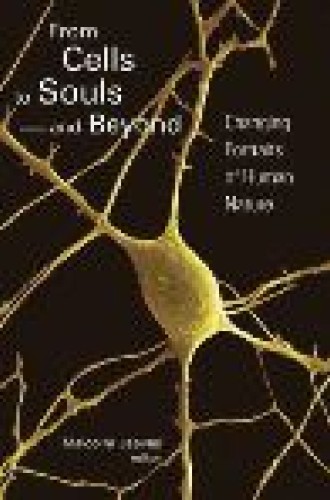From Cells to Souls—and Beyond/What About the Soul
As I was writing this review, I saw the headline “DNA Scientist Francis Crick Dies.” The distinguished codiscoverer of DNA challenged not only religious people and their notion of the soul, but everyone else as well when he argued in The Astonishing Hypothesis (1994): “You, your joys and your sorrows, your memories and your ambitions, your sense of personal identity and free will, are in fact no more than the behavior of a vast assembly of nerve cells and their associated molecules.” This type of harsh reductionism is one reason some theologians resolutely avoid any encounter with scientists. However, scientists and theologians alike must wonder if Crick is correct. Many have weighed in on this discussion, and it appears that Crick may be partially so.
From Cells to Souls—and Beyond and What About the Soul? address the very heart of Crick’s contention. Editors Malcolm Jeeves, a neuropsychologist, and Joel Green, a New Testament scholar, declare that it is insufficient to allow science to dictate theological concepts because scientific findings are too narrow to account for the complexity of human beings. On the other hand, they contend, theologians who ignore the relevant findings of science diminish the potential for making robust theological statements.
It is important for scientists, philosophers and theologians alike to recognize the pitfalls of both materialistic and dualistic approaches to the complex relation between mind and brain, soul and body, self and consciousness. The authors of these essays occupy a variety of positions in the middle of the spectrum between strict materialism, or physicalism, which reduces the mind to a mere epiphenomenon of the neurobiological workings of the brain, and dualism, according to which the mind and brain—or, theologically speaking, body and soul—are completely separate.
Though the specific positions of the contributors differ slightly (there are authors who adhere to emergent monism, emergent dualism, nonreductive physicalism and so on), their voices are unified and rooted in mutual exploration. They contend that dualism misrepresents the intimate relation between mind and body, while materialistic approaches ignore the complexity inherent in human cognition and behavior. Though they acknowledge that descriptions at each level of a system may be exhaustive, they argue that what happens at higher-order levels (in the mind) cannot be fully explained by activity at lower-order levels (in the neurobiological workings of the brain).
Jeeves’s volume specifically terms the contributors’ approach “irreducible intrinsic interdependence,” which emphasizes “duality without dualism.” The mind and brain cannot be collapsed into one another, but they also cannot be understood as mutually distinct. The interdependence of brain activity and the self is a duality, not a case of distinct dualism.
Green offers a biblical perspective on this interdependence of body and soul, contending that a dualistic approach is not grounded in scripture. Those who use the Hebrew nephesh and the Greek psyche as a basis for dualism are misrepresenting the terms. Instead, these terms refer to the inner self, the concept of which can be firmly grounded in the notion of interdependence. The biblical view of humans continually asserts that they have an intimate relation with the rest of nature, but one should not force biblical accounts of human nature to meld with modern scientific descriptions of physiology. Instead, one must identify the continuity and discontinuity between the two and appreciate the complexity of each. If a process of common investigation is adopted, both science and religion stand to benefit.
Green and Jeeves address the interaction between religion and science—a subject never more important than today—from different angles. Green’s book, which includes contributions from biblical scholars and articles on pastoral counseling, will attract a religious audience, while Jeeves’s volume contains more scientific material and is directed toward a more general audience. But because the two books take an interdisciplinary approach and focus on the growing field of neuroscience, they are both important contributions to the field of religion and science, and I recommend them to anyone interested in these topics.
Groundbreaking work in the cognitive sciences and genetics significantly influences portraits of the human being. If pastors, professors and laypeople follow the approaches of Jeeves and Green as they engage these new discoveries, they will gain an informed and accurate picture of human nature.






